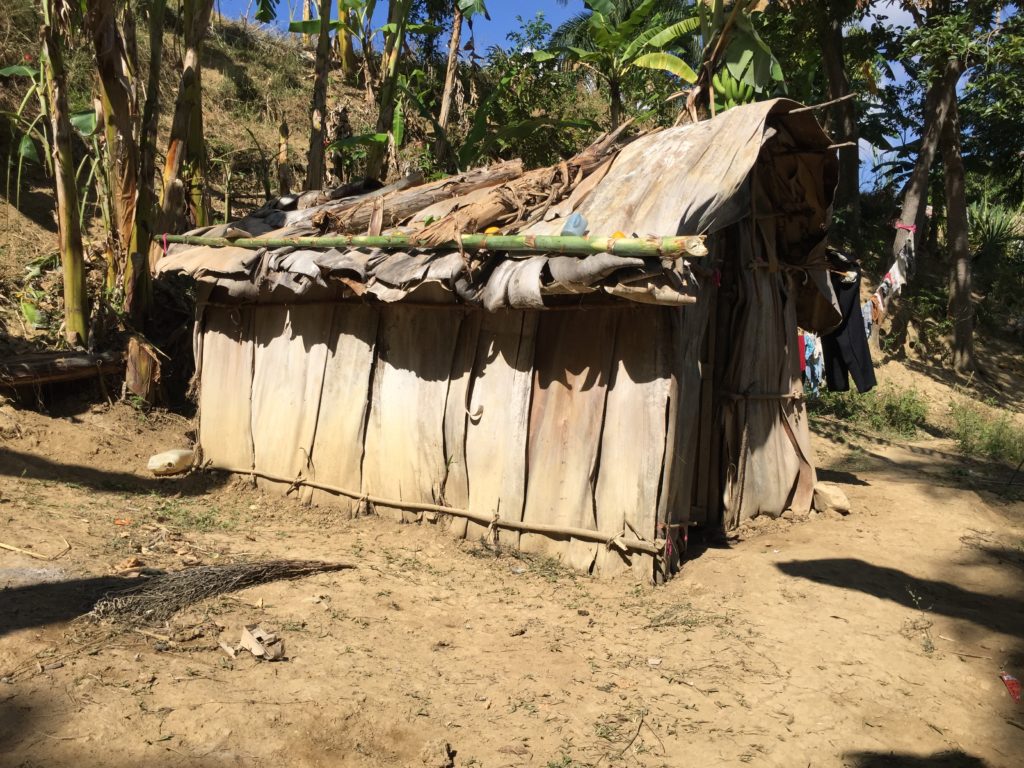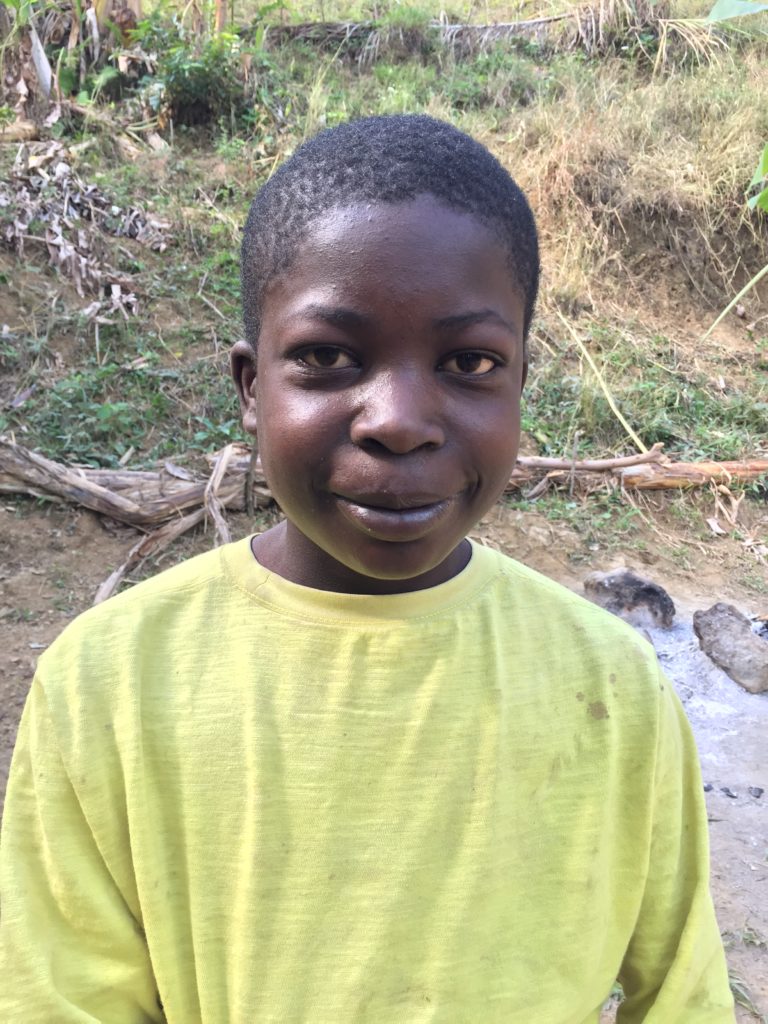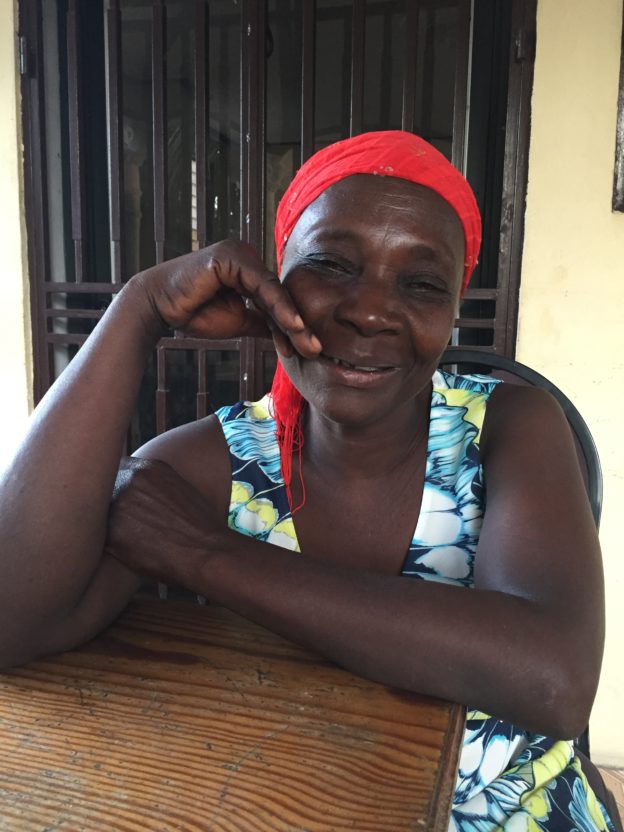Idalia Bernadin graduated from the CLM program in February 2018. At the time, she was living in Gwo Labou, a hillside community overlooking the river that cuts through Savanèt, a commune in the southeast corner of Haiti’s Central Plateau.
She and her husband, Villon, had moved to Gwo Labou at a low point in their lives. The second of their four sons had just been arrested, and they had felt forced to abandoned their home in Kadèt, in the valley across the mountain from Gwo Labou. Kadèt is in a hard-to-access corner of Kòniyon, the next commune to the south. Villon had been accused of theft. Neighbors said he stole a bunch of plantains out of a garden, and Idalia’s efforts to come to his defense only made things worse. So, they abandoned a home with a good tin roof, on land that Idalia had purchased by selling off some of her inheritance. They moved in with Villon’s sister and her husband.
When the CLM team met them shortly after the move, they were, thus, landless and homeless. They had nothing. Villon tried to continue to work their fields in and near Kadèt, but they are a long hike from Gwo Labou, and his reputation as a thief made it difficult for him to appear in the neighborhood. The couple didn’t have land in Gwo Labou, so they tried to get by working in their neighbors’ fields.
The CLM team helped them gain access to a small plot of land, so they were able to build a house. Many CLM members work hard to make the biggest, nicest houses they can while they are in the program. Three- and even four-room houses are common, though the program only provides some of the materials for a small, two-room one. Members choose to make the extra expense to take advantage of the opportunity CLM offers them, even if doing so uses up capital that they could use in other important ways.
Idalia was different. She and Villon did as little as they could get away with. They built only one small room. In fact, they had to do so twice, because their first effort was so perfunctory that the CLM director responsible for the region wouldn’t accept it as a bona fidehome. As short as all the members of the family are, even they could barely stand up in that first construction.
But as glad as Idalia and Villon were that the CLM program had found them, they didn’t want to live in Gwo Labou. Their plan was to remain in the area just long enough to graduate from the program, and then move back across the mountains to Kòniyon. They felt unwelcome in Gwo Labou. The man who made their plot of land available clearly wanted them off of it. He was planting his crops closer and closer to their front door. And they never really made friends there.
It took them a couple of months to prepare their move, but they were back in Kòniyon by June, just four months after graduation. They sold their house for 4000 gourds, or almost $60 at the time, and used most of the money to buy a goat. They sold their large pig as well. Getting it over the mountain to Kadèt would have been a challenge. When they returned to Kòniyon, they bought two smaller ones with the money. There is plenty of good forage where they now live, so Idalia is couting on pig-rearing as a main source of income.

They did not feel comfortable moving back to their old house in Kadèt. The accusations of theft still haunted Villon there. “That house is still ours.” Idalia explains, “We have four boys, and one of them can take it.” Villon had some land he inherited in Frijè, a neighborhood deeper in the valley than Kadèt, and they built a small shack on it, enough for the couple and their youngest son, Dalison, the only child still living with them. He’s in his mid-teens, and Idalia started sending him to school when she joined the program. He’s in school again this year, though he’s having to repeat first grade. His sickness last year made attendance to spotty.
When she moved to Frijè, Idalia decided that she needed to do something to earn a steady income. Her livestock could increase its value, but she would need much of that money at first to build her new house. She and Villon have farmland in both Frijè and Kadèt, and they would occasionally have harvest to sell, but only a few times each year. Villon works hard. He makes charcoal for neighbors and splits the proceeds with them, but that work is irregular. So, she decided to establish a small commerce.
She started it with 500 gourds from the sale of the house. She made bonbon dous, a kind of gingerbread. It sold well, but she sometimes sold on credit and had a hard time collecting the money that was owed her. “I’m not going to argue with someone about money.”
As that first money evaporated, she knew she had to come up with a different business plan. So, she went to the market in Pòtino with 1000 gourds of the proceeds from the sale of a crop of beans. She bought basic provisions: rice, sugar, oil, seasonings, etc., and began selling them out of her home. She now makes the trip to Pòtino every Sunday to restock. She still has trouble collecting what people owe her sometimes, but she’s found a wholesaler in the market who will sell her on credit when she needs it, so she’s able to keep her business going. It’s enough to manage her household expenses, at least when it’s combined with their farming and other activities. Her poultry is starting to flourish, too. She just sold two small roosters to buy a cellphone.
She’s optimistic about her future. Her son was released from prison. He behaved so well while inside that one of the guards now pays for him to go to school. He’s now living in Pòtoprens with family so that he can take advantage of the opportunity. She’s focused on building a new house. She knows it will take some time, but one of her goats just had kids, and that’s just the sort of progress she needs to make.
There is one more piece of this story I should share that speaks to Idalia and her relation to our program. It is hard to express just how out-of-the-way Frijè is. I was in Mable, in the mountains near the border between Savanèt and Kòniyon, when I went to look for her. I knew she had family living near Mable, so I was able to get some information there about where I might find her new home. But it was a hike of more than three hours each way, and coming back was uphill. I found the home, but did not find her there. I had a long talk with Dalison, whom I know well from some time he spent in the hospital in Mibalè. I learned a lot about the family and the changes they had made since moving, but I didn’t get to talk with Idalia. She was at the Kourèt market, selling the roosters and buying her phone.
A few weeks later, Idalia came looking for me in Mibalè. It was a hard, four-hour hike for her to get to the taxi stand where she got a motorcycle to Mibalè. But she had heard that I had come to see her, and she was unhappy that she hadn’t been there. “If I had been home, you wouldn’t have hiked backed the same day you came. I would have made you spend the night.” And she added, “CLM did a lot for me. I have goats and pigs now, and a way to keep going on.”

